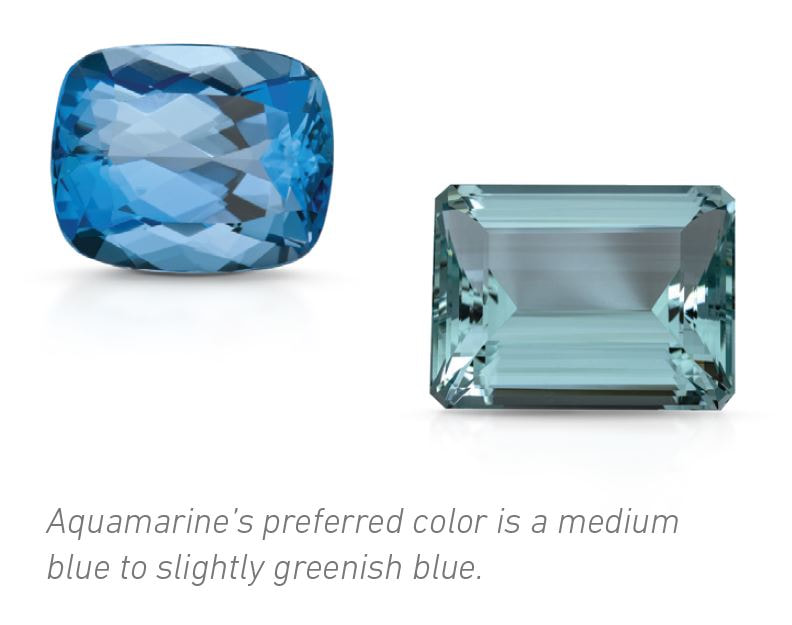AquamarineThought to enhance the happiness of marriages. The name “aquamarine” is derived from two Latin
words: aqua, meaning “water,” and marina, meaning “of the sea.” It has been said that the mineral beryl gives the wearer protection against foes in battle or litigation. It makes the wearer unconquerable and amiable, and also quickens the intellect. Today, the gemstone’s hardness, transparency and availability of large stones make it popular with designers, artists and carvers. Color Aquamarine is the light green-blue to blue variety of
the mineral beryl. It is generally light to medium in tone. Aquamarine’s most valuable color is a vibrant, medium blue to slightly greenish blue. Clarity Aquamarine may occur as large well-formed crystals
that are relatively clean, making them particularly valuable to collectors of mineral specimens. Some crystals might contain liquid inclusions, but clarity characteristics are few or absent in most finished gems. Source Brazil has been the main source of gem-quality
aquamarine since 1811. Most aquamarine mines are located in northeast Minas Gerais, Brazil. The largest aquamarine found in that region was discovered in 1910 and it weighed 244 lbs (110 kg). Another significant producer of aquamarine is Pakistan. Treatments It is standard practice to cut the rough and then heat
the fashioned stones. Heat treatment of aquamarine removes the green component and leaves a purer blue color. Nearly all blue aquamarine found in jewelry results from heat treatment of bluish green, greenish yellow or even brownish yellow beryl. |
All information are courtesy of Gemological Institute of America (GIA). OR DIAMOND are not affiliated with, connected to, or associated with GIA other than selling diamonds and gemstones graded by GIA and have GIA trained staff gemologist and accredited jewelry professional on site.
Images courtesy: Neal Litman Company; Silverhorn, Santa Barbara, California





